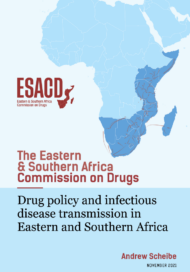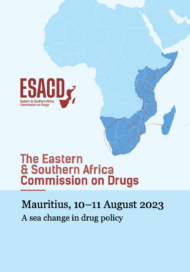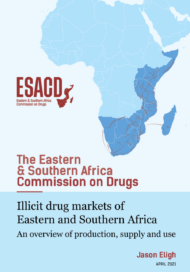Posted on 01 Nov 2021
This brief provides an overview of key issues relating to drug policy and the transmission of human immunodeficiency virus (HIV), tuberculosis (TB), hepatitis B virus (HBV) and hepatitis C virus (HCV) in Eastern and southern Africa (ESA). It focuses on heroin (the most widely used opiate in ESA), cocaine and methamphetamine. These substances have the potential to cause relatively more harm to individuals and society than other substances, apart from alcohol, which is responsible for significant harm to individuals and society.
The brief frames the broad factors that influence an individual’s drug use experience and risk. This is followed by an overview of the epidemiology of drug use; the epidemiology of priority infectious diseases among people who use drugs (specifically people who inject drugs); and drug-related harms in ESA. Thereafter, the links between drug policy and infectious disease are discussed. Drug policy and related health interventions and laws and policies are presented, based on the World Health Organization’s (WHO) Consolidated guidelines on HIV prevention, diagnosis, treatment and care for key populations. Examples of how drug policy has been used as a public health tool and as a public health threat in ESA are included. The brief ends with conclusions and recommendations based on the information presented.
Data for this brief was drawn from a desk review, supplemented by information provided by drug policy experts. Due to weak surveillance systems and limited research in ESA, little country-level data was available.




